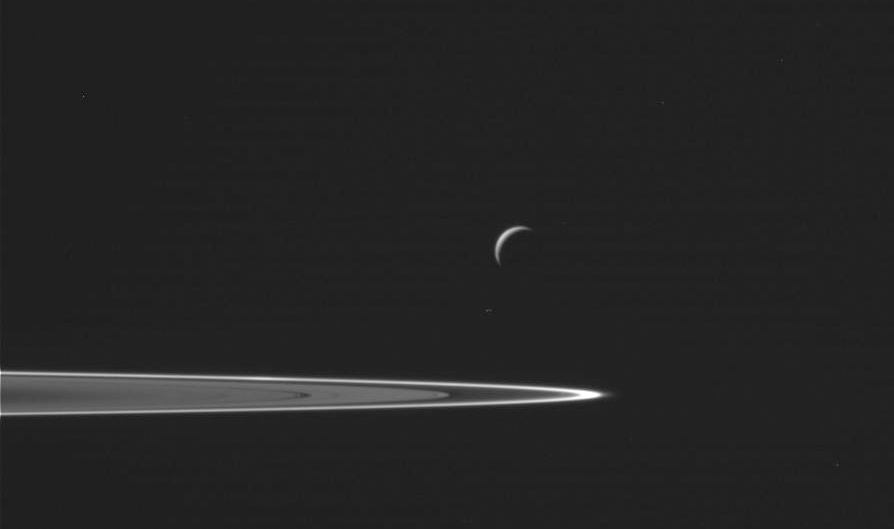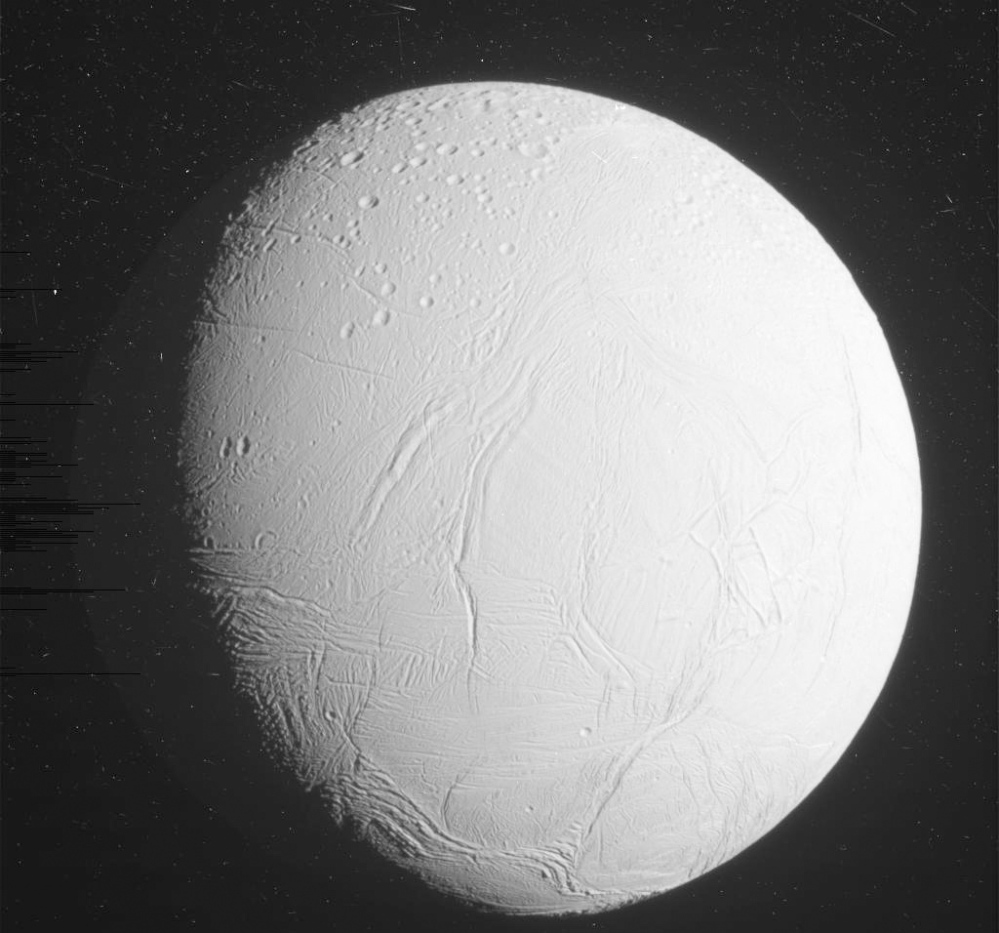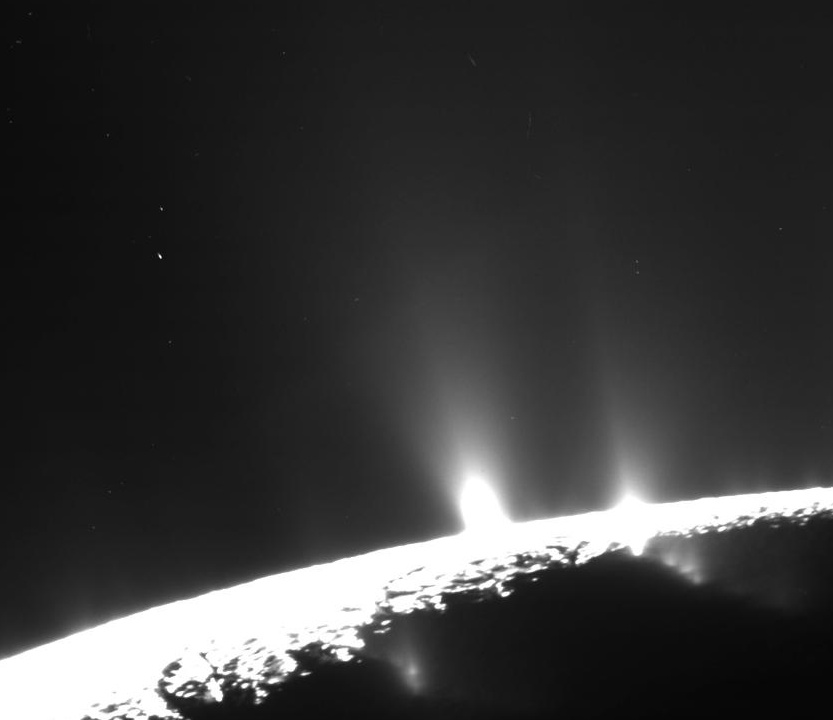CAPE CANAVERAL, Fla. — Saturn’s geyser-spouting moon Enceladus has a new portfolio, thanks to the Cassini spacecraft.
NASA released its latest close-ups of the little icy moon Friday. The preliminary unprocessed views are from Cassini’s flyby of Enceladus on Wednesday.
The Cassini spacecraft zoomed right through the ocean world’s erupting jet of water vapor and frozen particles. The U.S.-European spacecraft skimmed within 30 miles of the south pole to get a good dousing.
Project scientist Linda Spilker says the images are stunning, but the most exciting part is yet to come in the form of scientific data.
The geyser measurements are still coming down from the Saturn-orbiting Cassini. It will take weeks to analyze it all.
Scientists believe an underground ocean of liquid water is the source of the shooting jet stream.
This particular flyby won’t actually reveal whether or not Enceladus hosts marine life, microbial or otherwise. But by analyzing the chemistry of the plumes, scientists will be able to determine whether or not the world has hydrothermal activity – in other words, whether or not water from the ocean infiltrates and interacts with the moon’s rocky center. When these interactions happen on Earth, the result is warm water filled with life-supporting minerals.
If Cassini’s cosmic dust analyzer detects molecular hydrogen in the moon’s plumes, hydrothermal activity is a given. The amount of molecular hydrogen, if there is any, will help determine just how active the moon really is.
Because of the potentially monumental nature of the findings, NASA scientists have warned that they may take several months to review their data before making any announcements.
Send questions/comments to the editors.





Success. Please wait for the page to reload. If the page does not reload within 5 seconds, please refresh the page.
Enter your email and password to access comments.
Hi, to comment on stories you must . This profile is in addition to your subscription and website login.
Already have a commenting profile? .
Invalid username/password.
Please check your email to confirm and complete your registration.
Only subscribers are eligible to post comments. Please subscribe or login first for digital access. Here’s why.
Use the form below to reset your password. When you've submitted your account email, we will send an email with a reset code.